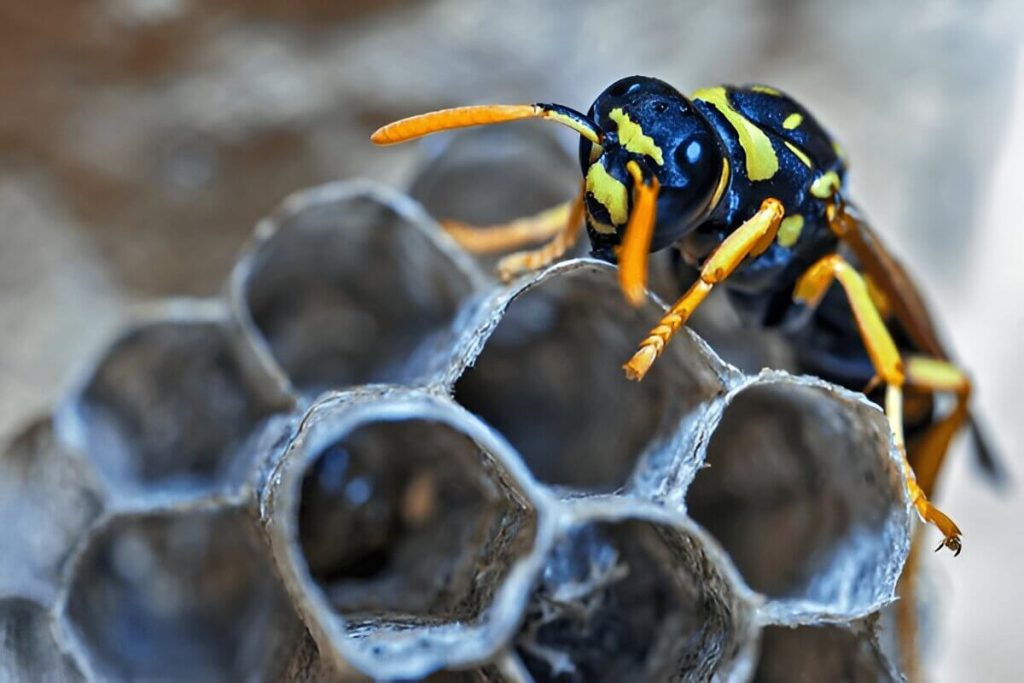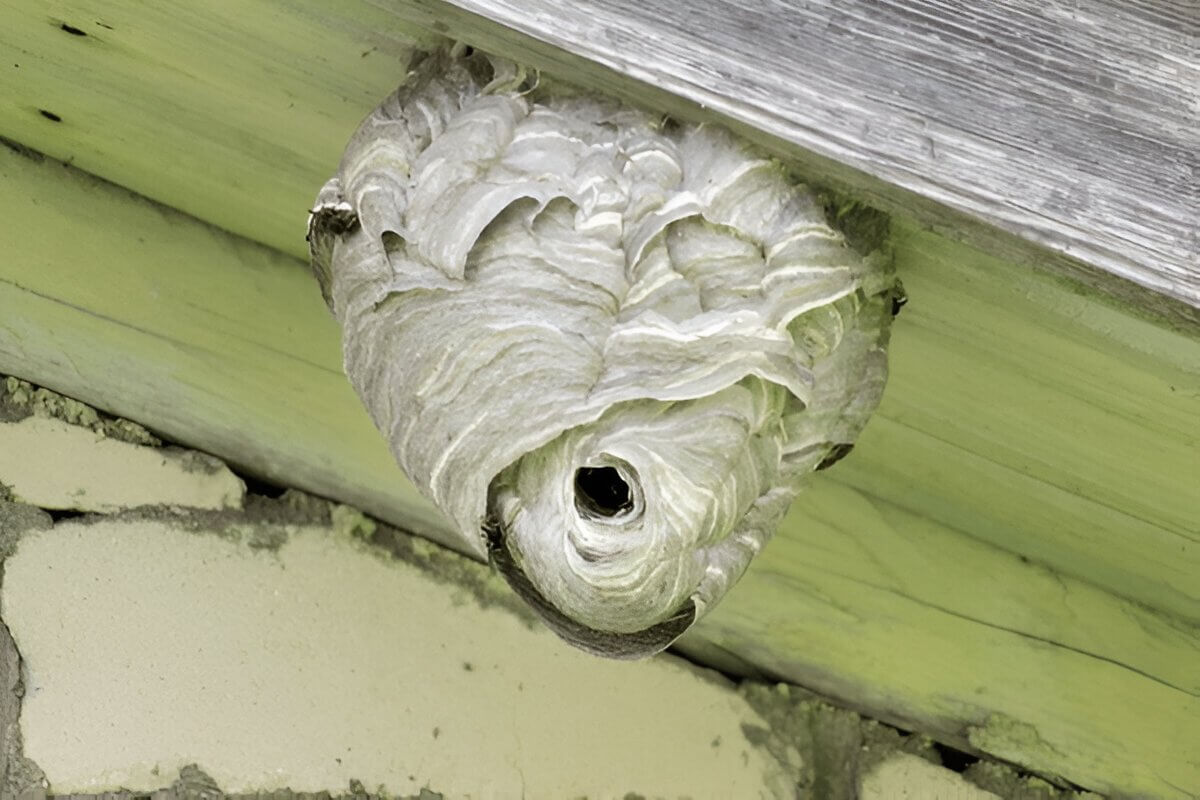Dealing with a wasp nest can be daunting, but prompt action is crucial for safety. Wasps pose risks like stings and infestations, so identifying them is essential. This guide offers strategies for safely removing nests through DIY or professional help, including safety measures and troubleshooting issues. You’ll also find tips to prevent future infestations and maintain a wasp-free space.
Why It’s Important to Address a Wasp Nest Promptly
Understanding the threat posed by a wasp nest is crucial for maintaining safety and peace of mind in your home or garden. Wasps can be aggressive defenders of their nests, and the dangers associated with a wasp infestation should not be underestimated. One of the primary concerns is the risk of stings, which can be painful and, in some cases, lead to severe allergic reactions or anaphylaxis. This makes it particularly important to consider the presence of children or individuals with known allergies when assessing the risks.
The importance of removing wasp nests promptly cannot be overstated. If left untreated, a wasp nest can grow significantly over time, leading to an increase in population and subsequently heightening the potential for encounters with these insects. This escalation not only raises safety concerns but can also lead to structural damage if nests are built within walls or other parts of buildings.
Addressing a wasp nest early on helps mitigate these risks effectively. Professional pest control services offer safe and efficient removal options that ensure both your safety and that of your property. By understanding and acting upon these dangers promptly, you safeguard against potential harm while maintaining a harmonious living environment free from unwanted pests.
Identifying Different Types of Wasps and Their Nests

When it comes to identifying different types of wasps and their nests, a keen eye for detail can help distinguish between species. One of the most recognizable types of wasps is the paper wasp. These wasps are known for their distinctive umbrella-shaped nests, which they construct from chewed wood fibers mixed with saliva, giving them a papery appearance. Paper wasps are generally slender with long legs and can be identified by their brownish bodies with yellow or reddish markings.
Yellowjackets, another common type of wasp, are often mistaken for bees due to their similar size and coloration. However, unlike bees, yellowjackets have more defined black and yellow striping on their abdomens and lack the fuzzy body characteristic of bees. Yellowjacket nests are typically found underground or in enclosed spaces like wall cavities; they have a layered structure made from chewed plant material.
Hornets are larger than both paper wasps and yellowjackets, with some species displaying striking black-and-white patterns rather than the typical black-and-yellow. The European hornet is an example that can be identified by its reddish-brown head and thorax combined with a striped abdomen. Hornet nests are often aerial and resemble large gray footballs constructed from paper-like material.
Understanding these characteristics not only aids in identifying common wasp species but also helps in determining how to approach or manage these insects safely around your home or garden.
Essential Safety Measures Before Removing a Wasp Nest
When it comes to removing a wasp nest, preparation is key to ensuring your safety and the effectiveness of the task. Before you even approach the nest, it’s crucial to equip yourself with the right safety gear for removing wasps. This includes wearing protective clothing for pest control, such as a long-sleeved shirt, pants, gloves, and closed-toe shoes. Ideally, you’ll want to choose clothing made from thick materials that can prevent stings.
A beekeeper-style hat with a veil can protect your face and neck from aggressive wasps. It’s also wise to wear goggles to shield your eyes from potential attacks. Once you’re properly dressed in protective gear, make sure you have all necessary tools within reach (such as a flashlight if you’re working in low light conditions) and ensure that any insecticide or removal equipment is functioning correctly.
Understanding how to prepare for nest removal safely involves not only gearing up but also planning your approach carefully. Choose a time when wasps are less, active typically early morning or late evening and ensure there’s an unobstructed escape route in case you need to retreat quickly. By taking these essential safety measures before removing a wasp nest, you significantly reduce the risk of injury and increase the likelihood of successful removal.
Diverse Methods to Remove a Wasp Nest
When faced with the challenge of a wasp nest on your property, it’s important to understand the diverse methods available for removal. A variety of approaches can be taken, from DIY solutions to enlisting professional help, each with its own advantages and considerations.
For those inclined towards DIY wasp nest removal methods, natural remedies for wasps offer a gentle approach. Ingredients like peppermint oil or vinegar can deter these insects without harsh chemicals. Spraying a mixture of water and essential oils directly onto the nest during cooler evening hours when wasps are less active is one such strategy.
Alternatively, chemical sprays for nests provide a more direct solution. These products are designed to kill wasps on contact and can be effective for small to medium-sized nests. It’s crucial to follow safety instructions carefully when using chemical sprays to protect yourself and the environment.
For larger infestations or if you’re uncomfortable handling the situation yourself, professional pest control services for wasps are an excellent option. Pest control experts have the experience and equipment necessary to safely remove nests, ensuring that all precautions are taken to prevent future problems.
Each method has its place depending on your comfort level, the size of the infestation, and environmental considerations. By understanding these diverse approaches, you can choose the most suitable method for dealing with unwanted wasp nests effectively and safely.
Troubleshooting Common Issues During and After Wasp Nest Removal
When it comes to removing a wasp nest, even the best-laid plans can sometimes go awry. One common issue that may arise is dealing with aggressive wasps during removal. To mitigate this, it’s crucial to approach the task with proper protective gear and consider performing the removal during cooler temperatures, such as early morning or late evening when wasps are less active.
If something went wrong with removing a wasp nest, such as incomplete removal leading to persistent activity, it’s important to reassess the situation. Ensure that all parts of the nest have been completely removed and consider using insecticide dust in hard-to-reach areas where remnants might remain.
Preventing the return of removed nests is another challenge many face post-removal. To prevent new colonies from establishing themselves, regularly inspect your property for new nests and seal any potential entry points around your home. Additionally, maintaining a clean environment by removing food sources can deter wasps from returning.
Complications post-removal can also occur if not handled properly. For instance, if there are lingering wasps or residual pheromones attracting new ones, using natural deterrents like peppermint oil or professional pest control services can be effective solutions. By addressing these common issues proactively, you can ensure a safer and more successful nest removal process.
Tips on Keeping Wasps at Bay
Preventing future wasp infestations requires a proactive approach that combines strategic deterrents and regular maintenance. One of the most effective ways to keep wasps at bay is by planting natural repellent plants around your home. Species such as mint, eucalyptus, and citronella are known for their ability to deter these stinging insects due to their strong scents.
In addition to using natural repellents, sealing entry points is crucial in preventing wasps from building nests in or around your home. Inspect areas like eaves, rooflines, and any cracks or crevices where wasps might gain access. Use caulk or other sealants to close off these potential nesting sites.
Regular inspections of your property can also help in early detection of any nascent nests. Check under eaves, porch ceilings, and other sheltered spots regularly throughout the warmer months. Early removal of small nests can prevent larger infestations down the line.
Combining these tips will create a less hospitable environment for wasps and significantly reduce the likelihood of future nest formations.
